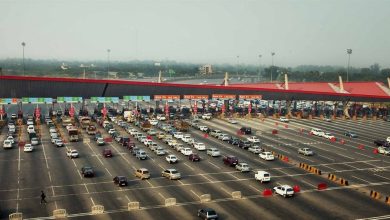City to Have AI-Driven Traffic System by ’25

Nagpur is set to revolutionize its traffic management with the implementation of an AI-driven Intelligent Integrated Traffic Management System (IITMS) by the end of 2025. This cutting-edge technology aims to keep the city’s traffic flowing smoothly, even in the face of natural disasters, political protests, or accidents. The AI will provide real-time data and simulations to help authorities manage traffic effectively and ensure uninterrupted movement.
What is IITMS?
Intelligent Integrated Traffic Management System
The IITMS is a comprehensive system that utilizes artificial intelligence to monitor and manage traffic. It involves a network of 165 traffic signals interconnected to a central AI brain housed in Nagpur’s Smart City control room. This AI will analyze data from CCTV cameras installed at major intersections, allowing for real-time traffic control.
Real-Time Traffic Monitoring
One of the key features of IITMS is its ability to monitor traffic in real time. The AI will assess the number of vehicles at each junction and adjust traffic signals accordingly. This dynamic system replaces the traditional preset timers, ensuring that traffic flows efficiently based on current conditions.
Benefits of AI-Driven Traffic Management
Enhanced Traffic Flow
By adapting to real-time traffic conditions, the AI system will reduce congestion and improve traffic flow. This means shorter travel times for commuters and less frustration on the roads.
Efficient Emergency Response
In the event of an emergency, such as a natural disaster or accident, the AI can quickly inform authorities about the best routes for emergency vehicles. This ensures that help arrives promptly and that other traffic is diverted to avoid further complications.
Handling Unforeseen Situations
The AI’s ability to simulate various scenarios allows it to prepare for unforeseen events. Whether it’s a political protest or a sudden roadblock, the system can predict the impact on traffic and suggest alternative routes to minimize disruption.
The Role of Data in Traffic Management
Data Collection and Analysis
The IITMS will collect massive amounts of data from various sources, including CCTV cameras and traffic sensors. This data will be processed by the AI to make informed decisions about traffic management.
Predictive Analytics
Using predictive analytics, the AI can forecast traffic patterns and potential issues before they occur. This proactive approach helps in maintaining smooth traffic flow and preventing gridlocks.
Implementation Process
Evaluation and Tender Process
Before the final implementation, bidders for the IITMS project must demonstrate their capabilities to the Nagpur Municipal Corporation (NMC). This evaluation process ensures that the chosen system meets all the required criteria.
Timeline for Completion
Once the tender is awarded, the winning bidder will have 15 months to complete the work. This timeline includes installing the necessary hardware and integrating the AI software into the existing infrastructure.
Potential Challenges and Solutions
Integration with Existing Infrastructure
Integrating the new AI system with Nagpur’s current traffic infrastructure may pose challenges. However, thorough planning and testing can mitigate these issues, ensuring a smooth transition.
Public Awareness and Adaptation
For the system to be effective, the public must be aware of the changes and adapt to the new traffic management methods. Public awareness campaigns and user-friendly interfaces can help ease this transition.
Future Prospects
Expanding to Other Cities
If successful, Nagpur’s IITMS could serve as a model for other cities in India and around the world. The technology has the potential to revolutionize urban traffic management globally.
Continuous Improvement
As AI technology advances, the IITMS can be continuously updated and improved. This ensures that the system remains effective and adapts to changing traffic patterns and emerging technologies.
The implementation of the AI-driven Intelligent Integrated Traffic Management System in Nagpur marks a significant step towards smarter and more efficient urban traffic management. By leveraging real-time data and predictive analytics, the system promises to reduce congestion, improve emergency response, and handle unforeseen events effectively. As Nagpur leads the way, other cities may soon follow, paving the way for a future where traffic flows seamlessly, no matter the circumstances.
Q1: What is the main purpose of IITMS?
A1: The main purpose of IITMS is to use AI to monitor and manage traffic in real-time, reducing congestion and improving traffic flow.
Q2: How does IITMS handle emergencies?
A2: The AI system can quickly inform authorities about the best routes for emergency vehicles and divert other traffic to avoid complications.
Q3: What are the benefits of using AI in traffic management?
A3: Benefits include enhanced traffic flow, efficient emergency response, and the ability to handle unforeseen situations through real-time data and simulations.
Q4: How long will it take to implement IITMS in Nagpur?
A4: Once the tender is awarded, the winning bidder will have 15 months to complete the implementation.
Q5: Can IITMS be used in other cities?
A5: Yes, if successful in Nagpur, IITMS could serve as a model for other cities in India and globally, revolutionizing urban traffic management.









